Albert, A. O., Andrasik, F., Moore, J. L., & Dunn, B. R. (1998). Theta/beta training for attention, concentration and memory improvement in the geriatric population. Applied Psychophysiology & Biofeedback, 23(2), 109.
Ambrus, G. G., Pisoni, A., Primaßin, A., Turi, Z., Paulus, W., & Antal, A. (2015). Bi-frontal transcranial alternating current stimulation in the ripple range reduced overnight forgetting. Frontiers in Cellular Neuroscience, 9. doi:10.3389/fncel.2015.00374
Angelakis, E., Stathopoulou, S., Frymiare, J. L., Green, D. L., Lubar, J. F., & Kounios, J. (2007). EEG neurofeedback: A brief overview and an example of peak alpha frequency training for cognitive enhancement in the elderly. Clinical Neuropsychology, 21(1), 110129.
Arendash, G. W. Transcranial Electromagnetic Treatment Against Alzheimer’s Disease: Why It Has the Potential to Trump Alzheimer’s Disease Drug Development. Journal of Alzheimer’s Disease, vol. 32, no. 2, Jan. 2012, pp. 243–66, doi:10.3233/JAD-2012-120943.
Arendash, G. W., Mori, T., Dorsey, M., Gonzalez, R., Tajiri, N., & Borlongan, C. (2012). Electromagnetic treatment to old Alzheimer’s mice reverses β-amyloid deposition, modifies cerebral blood flow, and provides selected cognitive benefit. PloS One, 7(4), e35751. doi:10.1371/journal.pone.0035751
Budzynski, T., Budzynski, H. K., &l Tang, H-Y. (2007). Brain brightening: restoring the aging mind. Chapter in J. R. Evans (Ed.), Handbook of Neurofeedback. Binghampton, NY: Haworth Medical Press, 231–265.
Capelli, Enrica, et al. “Low-Frequency Pulsed Electromagnetic Field Is Able to Modulate MiRNAs in an Experimental Cell Model of Alzheimer’s Disease.” Journal of Healthcare Engineering, 2017, doi:https://doi.org/10.1155/2017/2530270.
Escolano, C., Aguilar, M., & Minguez, J. (2011). EEG-based upper alpha neurofeedback training improves working memory performance. Paper presented at the 2011 Annual International Conference of the IEEE Engineering in Medicine and Biology Society, Boston, MA.
Gomez-Pilar J, Corralejo R, Nicolas-Alonso LF, Álvarez D, Hornero R. Neurofeedback training with a motor imagery-based BCI: neurocognitive improvements and EEG changes in the elderly. Med Biol Eng Comput. 2016 Nov;54(11):1655-1666. Epub 2016 Feb 23.
Helfrich, R. F., Mander, B. A., Jagust, W. J., Knight, R. T., & Walker, M. P. (2018). Old Brains Come Uncoupled in Sleep: Slow Wave-Spindle Synchrony, Brain Atrophy, and Forgetting. Neuron, 97(1), 221-230.e4. doi:10.1016/j.neuron.2017.11.020
Iaccarino, H. F., Singer, A. C., Martorell, A. J., Rudenko, A., Gao, F., Gillingham, T. Z., … Tsai, L.-H. (2016). Gamma frequency entrainment attenuates amyloid load and modifies microglia. Nature, 540(7632), 230–235. doi:10.1038/nature20587
Im, J. J., Jeong, H., Bikson, M., Woods, A. J., Unal, G., Oh, J. K., … Chung, Y.-A. (2019). Effects of 6-month at-home transcranial direct current stimulation on cognition and cerebral glucose metabolism in Alzheimer’s disease. Brain Stimulation, 12(5), 1222–1228. doi:10.1016/j.brs.2019.06.003
Koberda, J. L. (2014). Z-score LORETA neurofeedback as a potential therapy in cognitive dysfunction and dementia. Journal of Psychology & Clinical Psychiatry, 1(6). doi: 10.15406/jpcpy.2014.01.00037
Leffa, Douglas Teixeira, et al. “Transcranial Direct Current Stimulation Improves Long-Term Memory Deficits in an Animal Model of Attention-Deficit/Hyperactivity Disorder and Modulates Oxidative and Inflammatory Parameters.” Brain Stimulation, vol. 11, no. 4, July 2018, pp. 743–51, doi:10.1016/j.brs.2018.04.001
Mammarella, Nicola, et al. “Self-Generation and Positivity Effects Following Transcranial Random Noise Stimulation in Medial Prefrontal Cortex: A Reality Monitoring Task in Older Adults.” Cortex, vol. 91, June 2017, pp. 186–96, doi:10.1016/j.cortex.2016.11.005
Nikolin, S., Martin, D., Loo, C. K., & Boonstra, T. W. (2018). Effects of TDCS dosage on working memory in healthy participants. Brain Stimulation, 11(3), 518–527. doi:10.1016/j.brs.2018.01.003
Palm, U., Chalah, M. A., Padberg, F., Al-Ani, T., Abdellaoui, M., Sorel, M., … Ayache, S. S. (2016). Effects of transcranial random noise stimulation (tRNS) on affect, pain and attention in multiple sclerosis. Restorative Neurology and Neuroscience, 34(2), 189–199. doi:10.3233/RNN-150557
Summers, Jeffery J., et al. “Does Transcranial Direct Current Stimulation Enhance Cognitive and Motor Functions in the Ageing Brain? A Systematic Review and Meta-Analysis.” Ageing Research Reviews, vol. 25, Jan. 2016, pp. 42–54, doi:10.1016/j.arr.2015.11.004.
Wang, J., & Hsieh, S. (2013). Neurofeedback training improves attention and working memory performance. Clinical Neurophysiology, 124, 2406-2420.
YuLeung To, E., Abbott, K., Foster, D. S., & Helmer, D. (2016). Working memory and neurofeedback. Applied Neuropsychology: Child, 5(3), 214–222. doi:10.1080/21622965.2016.1167500

